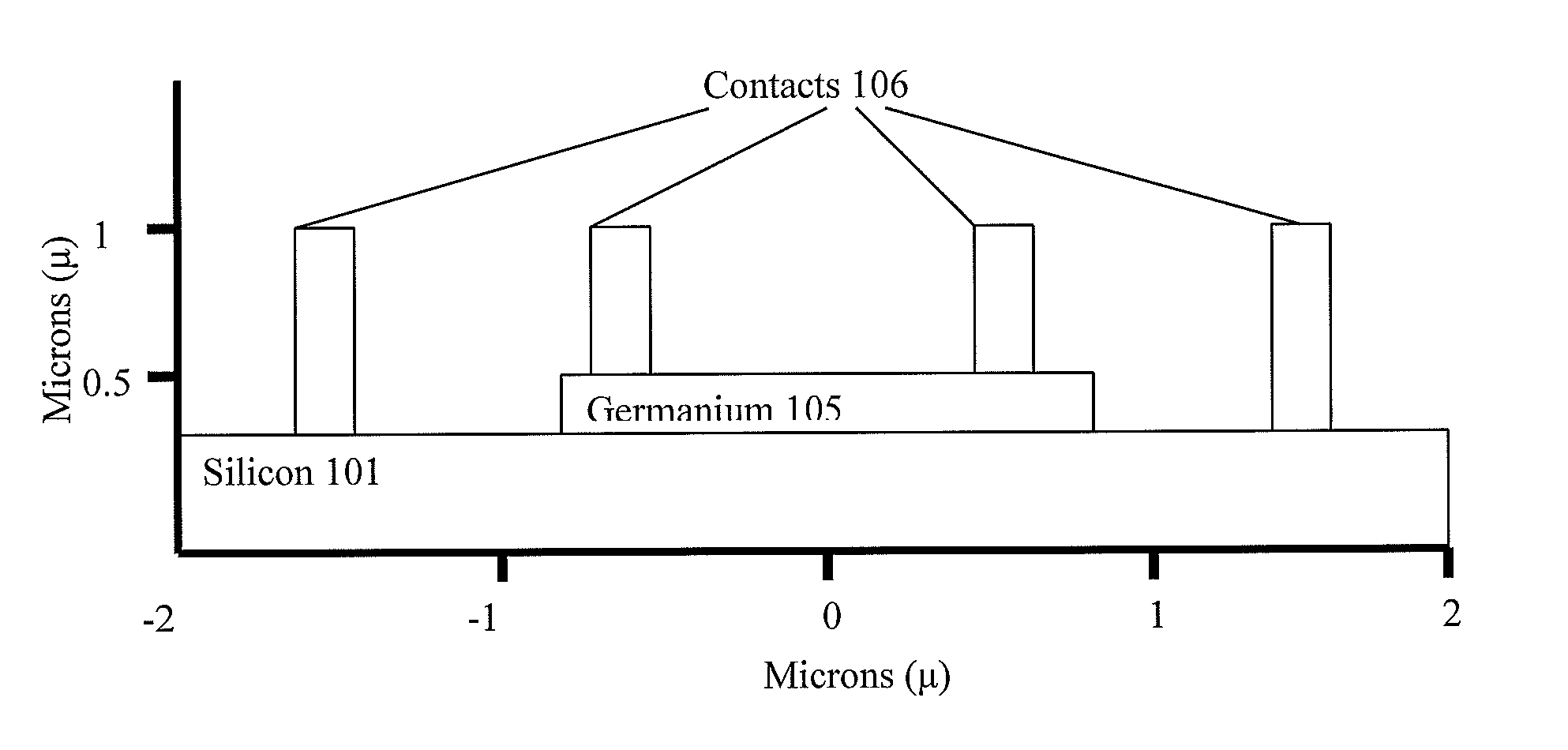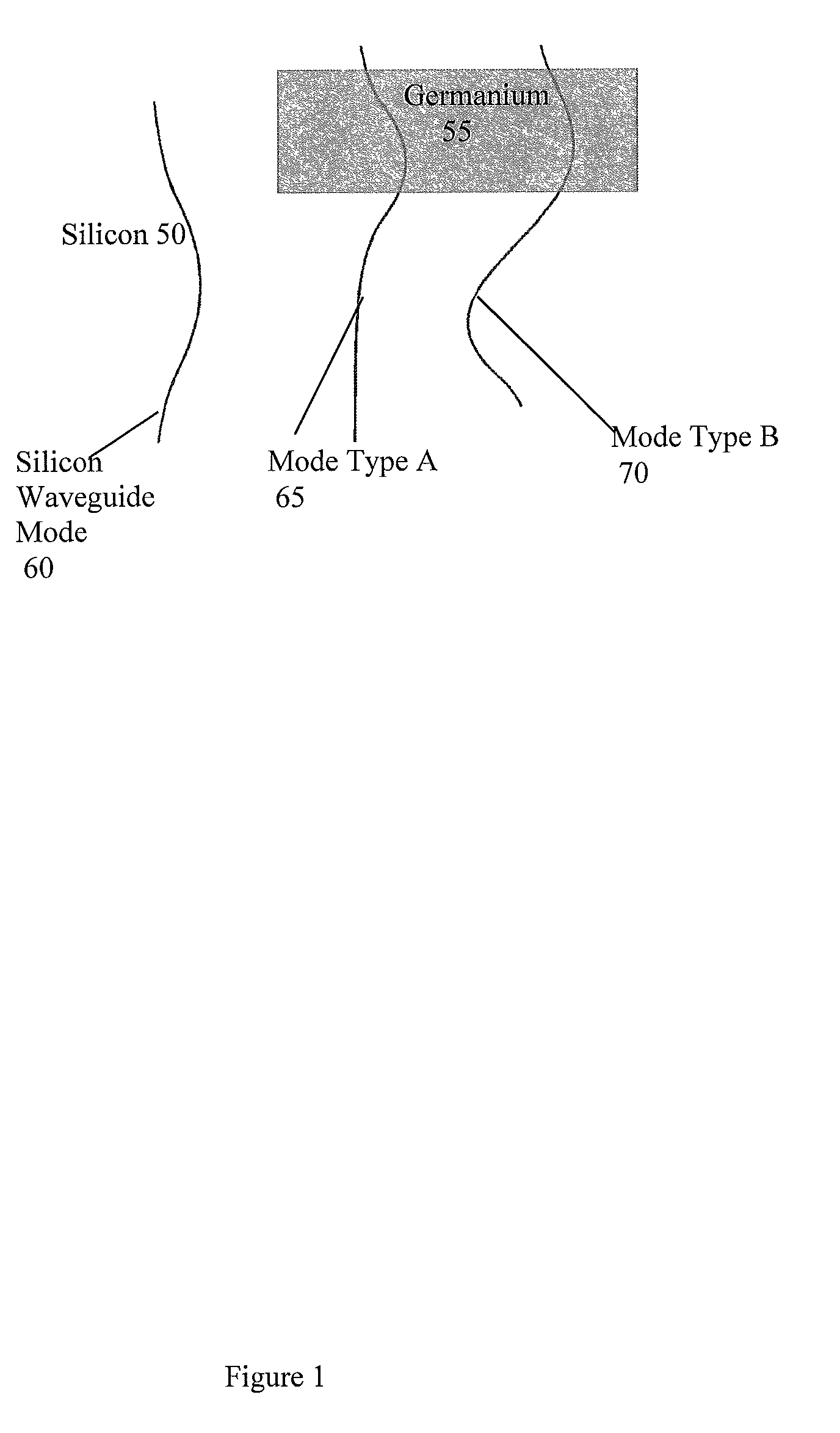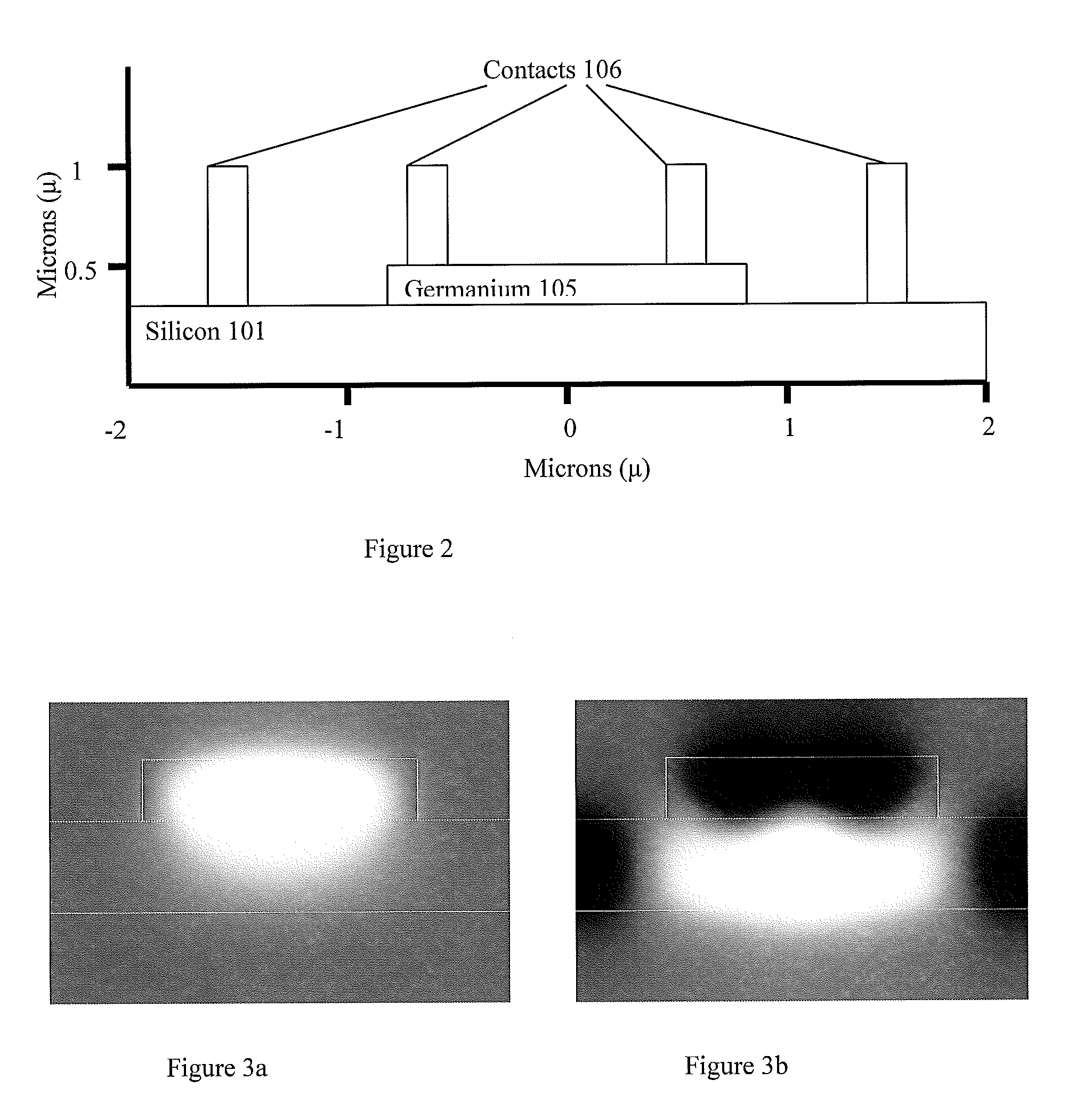Design of CMOS integrated germanium photodiodes
a technology of integrated germanium and photodiodes, which is applied in the direction of optical elements, manufacturing tools, instruments, etc., can solve the problems of less sensitive and/or noisy devices, and achieve the effects of reducing optical scattering losses and/or optical absorption losses, improving integrated waveguide photodiodes, and improving the effect of integrated waveguide photodiodes
- Summary
- Abstract
- Description
- Claims
- Application Information
AI Technical Summary
Benefits of technology
Problems solved by technology
Method used
Image
Examples
Embodiment Construction
[0048]For the purposes of discussion, modes in photodiodes according to the current invention may be numbered (mode 1 , mode 2 , mode 3) in order according to increasing index and / or typed (type A, type B, type C) according to other properties. Mode 1 (mode type A) is the ground mode of the waveguide photodiodes. It has a single lobe, a high overlap with the germanium, and is well guided by the germanium stripe even in the absence of other structures in the silicon. Mode type B has a vertical lobe structure and a reduced overlap with germanium as compared with mode 1 . Note that vertical refers to the direction normal to the wafer surface. In some cases, it may be only partially guided by the germanium stripe alone; for example, a type B mode may be a leaky mode in the absence of other structures such as, but not limited to, side-trenches. Mode type C has a mode overlap with germanium that is substantially higher than mode type B's overlap with germanium. Mode type C has a mode over...
PUM
| Property | Measurement | Unit |
|---|---|---|
| infrared wavelength | aaaaa | aaaaa |
| infrared wavelength | aaaaa | aaaaa |
| width | aaaaa | aaaaa |
Abstract
Description
Claims
Application Information
 Login to View More
Login to View More - R&D
- Intellectual Property
- Life Sciences
- Materials
- Tech Scout
- Unparalleled Data Quality
- Higher Quality Content
- 60% Fewer Hallucinations
Browse by: Latest US Patents, China's latest patents, Technical Efficacy Thesaurus, Application Domain, Technology Topic, Popular Technical Reports.
© 2025 PatSnap. All rights reserved.Legal|Privacy policy|Modern Slavery Act Transparency Statement|Sitemap|About US| Contact US: help@patsnap.com



